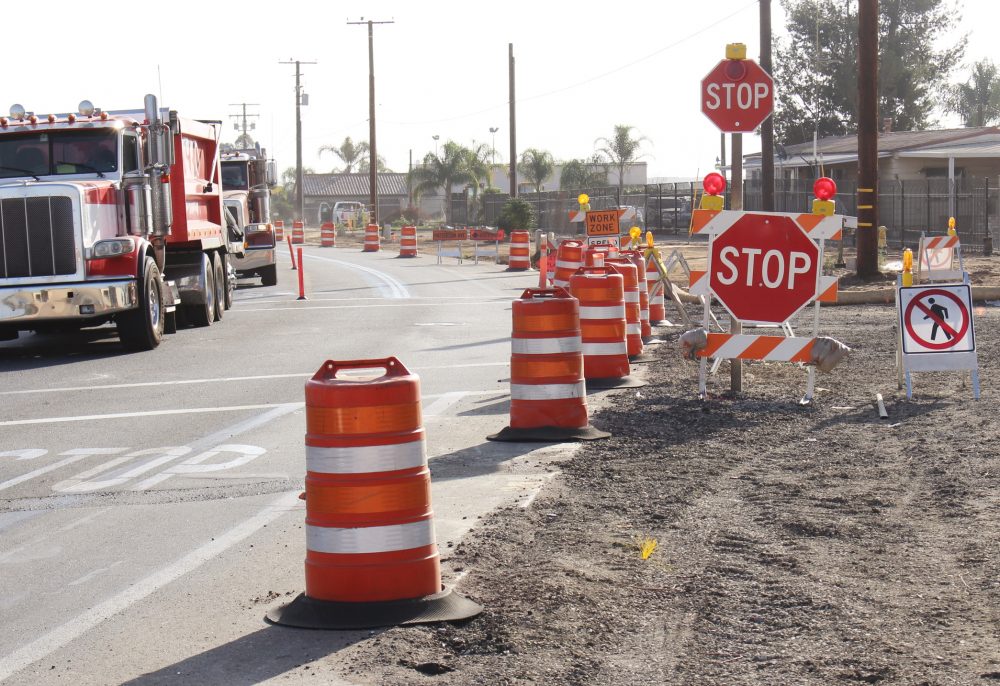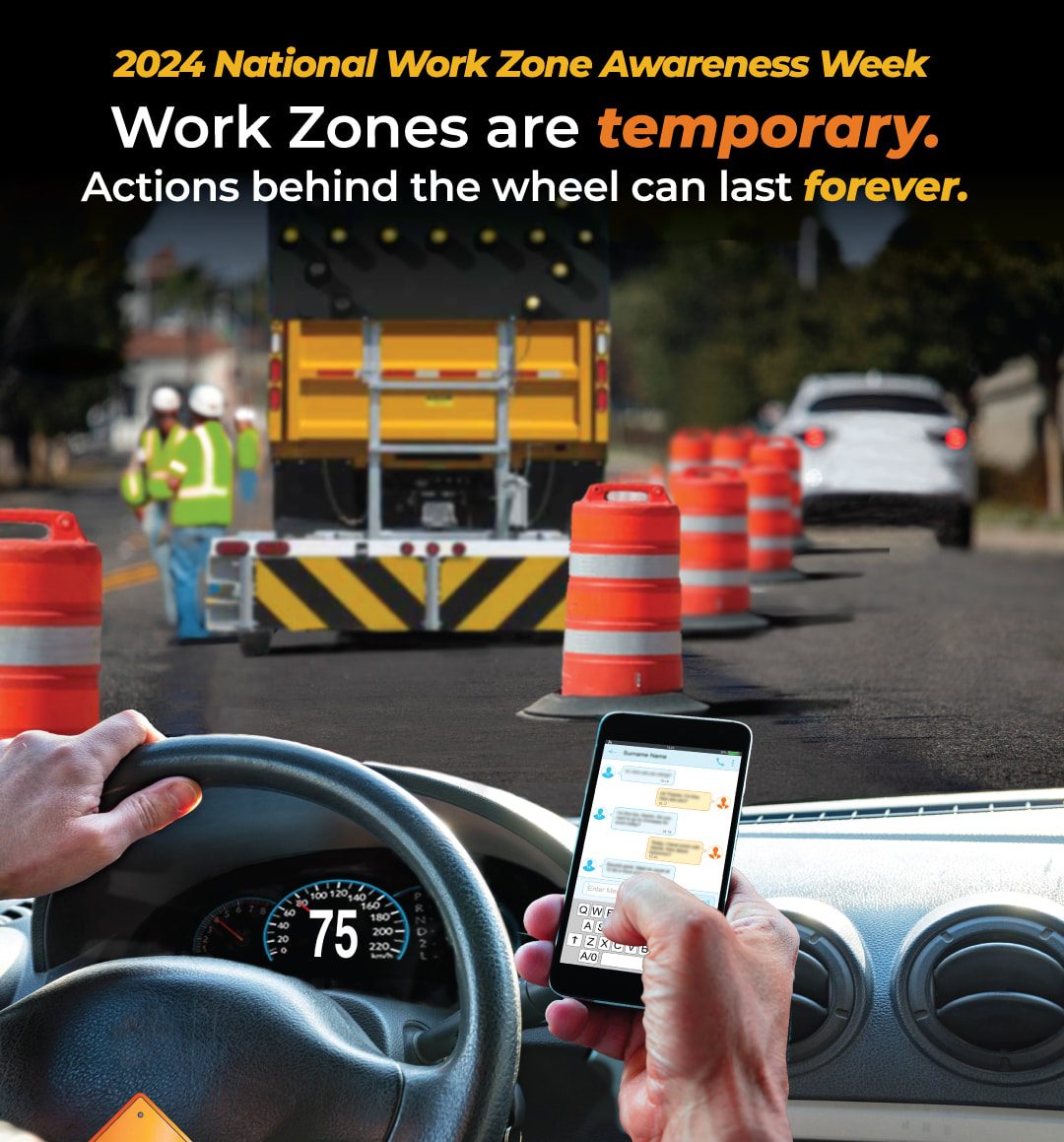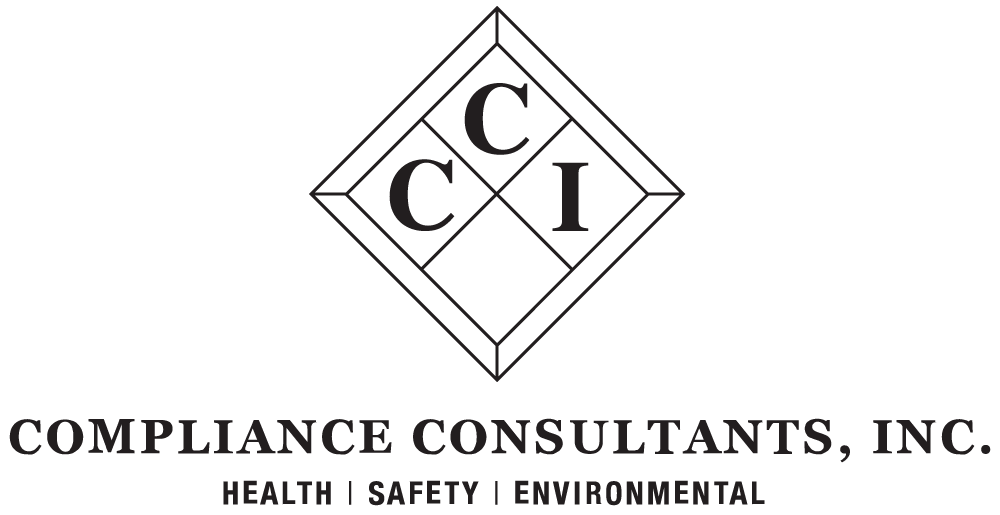
National Work Zone Awareness (Week) – Take Action For Safety
National Work Zone Awareness Week (NWZAW) takes place nationwide, between state departments of transportation (DOT’s), national road safety organizations, government agencies, private companies, and individuals.
The 2024 National Work Zone Awareness Week (NWZAW) is scheduled for April 15th-19th.
National Work Zone Awareness Week (NWZAW) has been successful in spreading awareness for work zone safety across the country because of participation from organizations and individuals
The 2024 Theme is: “Work Zones Are Temporary – Actions Behind the Wheel Can Last Forever.”

How did the National Work Zone Awareness Week campaign get started?
National Work Zone Awareness Week got started in 1997 in the state of Virginia with a public awareness campaign. This campaign caught the attention of other states and California developed its own campaign, called “Slow for The Cone Zone.” In December of 1999, the Federal Highway Administration (FHWA) and the American Association of State Highway Transportation Officials (AASHTO) decided to launch the first official NWZAW.
Together, they outlined goals for National Work Zone Awareness Week efforts:
- Raise awareness of the need for caution when driving through work zones to decrease fatalities and injuries,
- Establish and promote a uniform set of safety tips,
- Highlight the value of training and best practices regarding work zone safety among individuals in the private sector, roadway construction industry,
- Communicate potential impacts of motorists’ behavior in response to traffic delays, consult on ways to mitigate negative reactions,
- Encourage partnership efforts with concerned entities.
OSHA Tips to Keep Your Work Zones Safe
- Use traffic control devices, signals and message boards to instruct drivers to follow established paths away from where work is being done.
- Deter unauthorized entry into work zones by using concrete, water, sand, collapsible barriers and other impact-absorbing materials.
- Make sure flaggers are wearing high-visibility clothing with a fluorescent background and made of retroreflective material. This makes them visible from at least 1,000 feet. They also should be using “STOP/SLOW” paddles or paddles with lights, and be trained on authorized signaling methods.
- Ensure work zones are well lit. “Lighting for workers on foot and for equipment operators should be at least 5 foot-candles or greater. Where available lighting is not sufficient, flares or chemical lighting should be used. Glare should be controlled or eliminated.”
- Buckle up. “Seat belts and rollover protection should be used on equipment and vehicles as the manufacturer recommends.”
Learn more about the campaign at nwzaw.org.
Recognize “Go Orange Day” to Honor Fallen Workers
NWZAW and Go Orange Day are especially important to the families of victims who have lost their lives in work zones. The event has become a staple of NWZAW and is a time for individuals and organizations across the country to express their support for work zone safety by wearing orange.
Compliance Consultants, Inc. Helps You Stay Safe
Whether it’s a health and safety plan, training options, industrial hygiene considerations or a site assessment, we are here to help you and your workers stay safe.
Visit the National Work Zone Awareness Week website for more information and ideas on how to participate.



